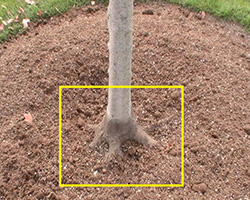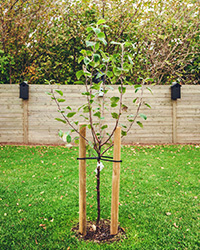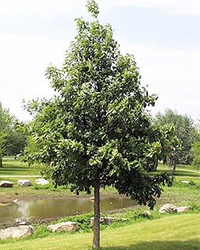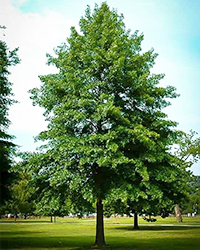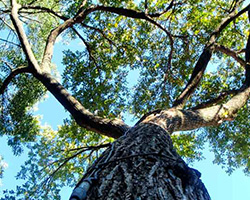Tree Care Changes as Trees Age
According to the Denver Forester, the needs of trees change as they age. For tree care, urban foresters use a concept called PEGSMOR to understand the needs of a tree over its lifespan. PEGSMOR stands for Planting, Establishment, Growth, Structure, Maturity, Over-maturity, and Replacement. PEGSMOR is similar to Tree Canopy Management discussed in our blog posted last May. Both concepts take a holistic approach to tree care resulting in esthetically pleasing and shade producing trees.
Planting
Tree age: First year
Since trees live for decades, homeowners should think about the following before digging a hole to plant a tree.
- Site analysis: The site should be sunny with available moisture and soil nutrients to support tree growth.
- Species selection: Denver’s soil, dry climate, and unpredictable weather are tough on trees, so it is wise to pick a tree from a reputable cultivator that grows well here.
- Site preparation: Clay soils need to be amended with compost to support healthy root growth.
- Planting – The bigger the hole, the better, but it should be twice as wide as the tree ball. Be sure the trunk flare sits above ground when filling the hole with soil. Complete the job with watering, mulching, and staking.
The Park People organization supports Denver’s park system. They offer a tree-planting program called Denver Digs Trees. Each spring, the organization provides low-cost trees to Denver citizens to plant in their yards. Click here for more information about the Denver Digs Trees program and to sign up for trees.
Establishment
Tree age: 3 to 5 years
Tree establishment begins after the tree is placed in the ground. It takes about three to five years for a sapling to become established after planting. Pruning at this time is minimal, but for trimming off lower branches for mowers to around the tree without obstruction.
Growth
Tree age: 14 years
Young trees, after they become established, start to grow. Arborist prune trees every three years to develop a strong central leader, maintain enough foliage for photosynthesis, and stimulate further height, diameter, and root growth. Regular pruning trains the tree to produce a central leader and removes any dead and interfering branches. Training a tree to form a central leader is the most important step in establishing a healthy, long-lived tree. Trimming trees in their growth stage avoid costly pruning of a much larger, neglected mature tree. Regular watering and mulching are a must during a tree’s growth stage.
Tree Care Tips
- Prune every three years
- Remove deadwood, eliminate weak crotches, eliminate interfering branches.
- Water during dry periods.
- Winter water.
- Replenish mulch
- Keep grass away from trunk
Structure
Tree age: 24 years
The tree is now tall enough for an arborist to select its permanent structural branches. Pruning is done every five to seven years to maintain structure and branch scaffolding. Periodic pruning eliminates weak crotches, deadwood, defective, and interfering branches. Be sure to water trees during Denver’s summer and winter droughts.
Tree Care Tips
- Prune every five years for most trees to maintain center leader.
- Select primary and secondary branches.
- Remove deadwood, eliminate weak crotches, eliminate interfering branches.
- Winter water.
- Replenish mulch in the spring.
Mature
Tree age: 50+ years
A mature tree with a healthy structure adds to the curb appeal of any home. A mature tree develops a full crown, and this stage lasts about 20 to 60 years, depending on species. Mature trees should be lightly pruned every seven to ten years to remove dead, interfering, and weak branches.
Tree Care Tips
- Prune every seven or ten years, depending on species.
- Remove deadwood.
- Eliminate interfering and weak tertiary and quaternary branches.
- Winter water.
Over-Mature
Tree Age: 50-100 years
An over-mature tree declines faster than it grows. Typical signs are branch or crown dieback, and decay starts to advance, weakening the tree over time. Trees in decline become hazardous, so they should be inspected for safety at least once every three years. Pruning focuses on removing dead, dying, decayed, or large defective branches. Overmature Silver Maples in Denver become hollowed out and unstable. Homeowners with a leaning Silver Maple should get it removed immediately to avoid property damage.
Tree Care Tips
- Prune every three years for most trees.
- Remove deadwood.
- Remove defective branches.
- Cable or brace unstable branches.
- Monitor structural stability.
Replacement
Tree Age: 50-100 years
Replacement or tree removal is required once a tree becomes unsound unstable. Call a tree service, like Ross Tree, for tree removal, stump grinding, and tree planting. One of our arborists can recommend tree species that grow well in Denver and are low maintenance.
Tree Care Tips
- Remove the tree.
- Grind stump.
- Plant a new tree.
A great time to call a tree company, like Ross Tree, is during the Growth and Structure stages of tree growth. Early pruning gets the tree growing correctly, which lowers tree maintenance costs in the long term. For an appointment, please fill out the tree service request form or call 303-871-9121.


